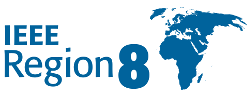B2B: a proof-of-concept experiment in brain-to-brain Communication
[singlepic id=1325 h=150 float=left]Brain-computer interfacing (BCI) is a technique to provide a means of communication through brain activity alone, in those with severe communication difficulties such as those suffering with “locked-in” syndrome. Brain activity, detected from electrodes glued to the scalp, is decoded to understand communication instructions. In the past we have used the so-called motor-imagery (MI) based BCI to steer the direction of a motorised wheelchair (see Figure 1) through thought alone, as can be seen here.
In May of 2009 our BCI laboratory performed and recorded a simple proof-of-concept experiment whereby, for the first time, we showed rudimentary brain-to-brain (B2B) communication. We did this by bringing together two well known BCI paradigms and combining them over an internet link to allow information extracted from one person’s brain to be transmitted and detected off the brain of another.
On the transmitter side a standard motor-imagery based BCI paradigm was established using a 2-channel electroencephalography (EEG) system with recording electrodes placed over the motor cortext. For the sake of simplicity a binary system was used whereby EEG activity recorded during imagined LEFT arm movements was decoded to characterise a “0” and imagined RIGHT arm movements for a “1”. The MI system characterised the two states based on a 3 s recording of the 1st user’s brain signals (EEG).
The two states were transmitted over the internet through a simple two-way protocol, using simple hand-shaking to acknowledge transmission and arrival of the information over the communication link (see Figure 2).
[singlepic id=1326 h=150 float=left]At the receiving station, a BCI paradigm based on a steady-state visual evoked potential (SSVEP) system was used. This system utilises a white LED bank that flashes at one of two frequencies (f1=14 Hz, f2=16 Hz). The LED flashes evoke EEG signals, recorded over the visual cortex, that exhibit a central frequency around the flashing rate. Recordings from the receiving station were made with a 2 channel EEG system from electrodes placed over the visual cortext. When a “0” or “1” was received from the communication channel, the LEDs flashed at either of f1 or f2 respectively and a 3 s segment of EEG from the visual cortext of the wearer was acquired and a classifier based on spectral power was used to detect the central frequency which was then interpreted as a “0” or “1” (based on the detected core frequency).
Once the transmitted and detected “bit” of information was established, the system restarted and the cycle began once again. The system was trialed and tested a number of times and the experiment was documented here.
This experiment was devised as a proof-of-principle study, specifically to show the state of the art in BCI. The use of simple, two-channel, affordable amplifiers and very simple algorithms on both of the transmitting and receiving stations, coupled with a very simple and easy to understand B2B paradigm, have shown that BCI is not science-fiction but is indeed science-fact.
This experiment highlights the reality of BCI as a means of establishing an alternative means of communication, delivered to those that really need it. It shows that research in the neurosciences, with support from engineers, physicists and computer scientists can result in meaningful applications across the life-sciences.
Prof Christopher J. James, B.Elec.Eng.(Hons), PhD, SMIEEE, FIET, FRSM
IEEE UKRI Section Chair, IEEE UKRI EMBS Chapter Chair, IEEE EMBS ADCOM Europe Representative
Institute of Digital Healthcare
International Digital Laboratory
University of Warwick
Coventry CV4 [email protected]
UNITED KINGDOM+44 (0)24 7615 1261
